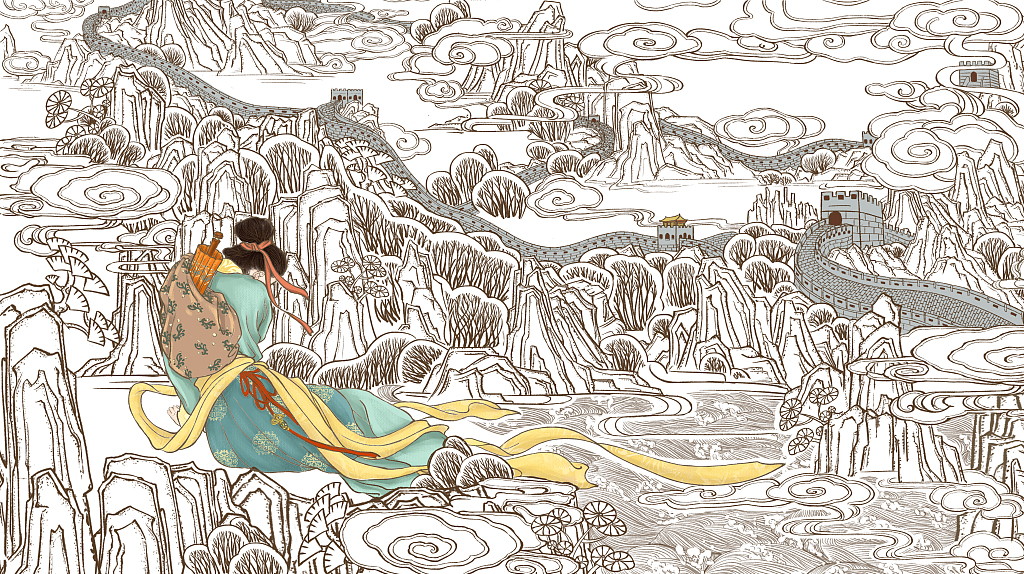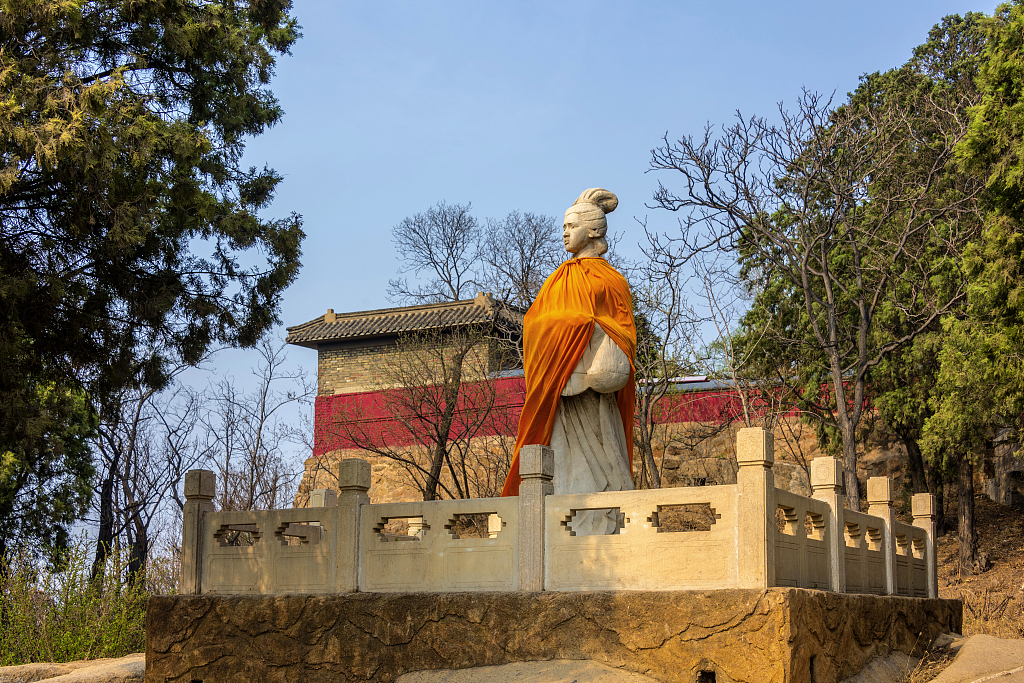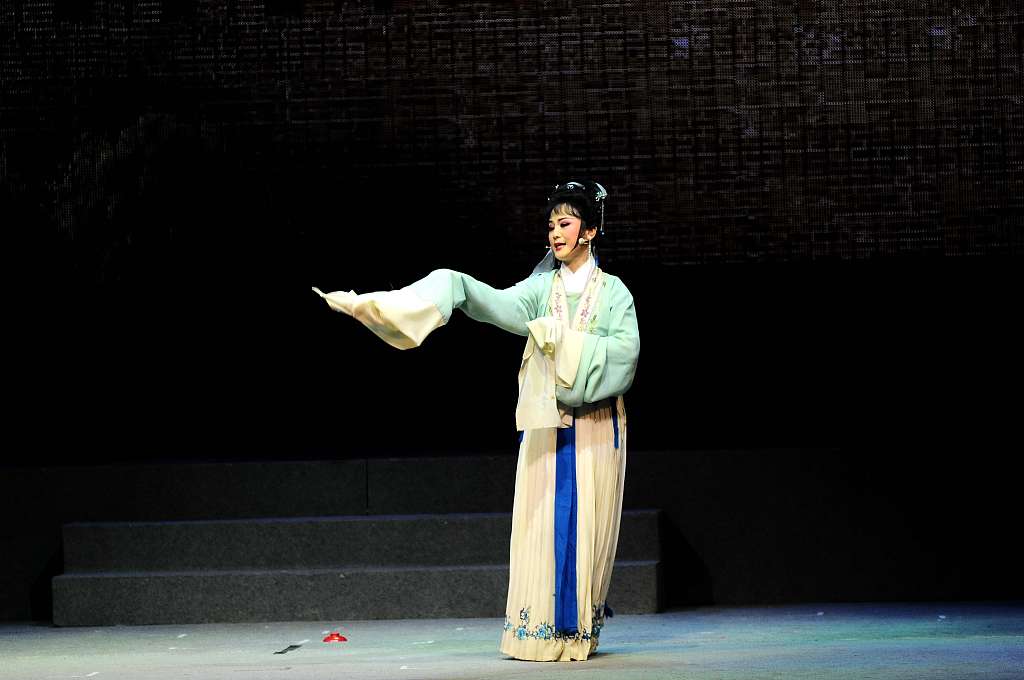
A section of the Great Wall, a UNESCO World Heritage Site. /CFP
A section of the Great Wall, a UNESCO World Heritage Site. /CFP
As a complex undertaking built by human hands, the Great Wall bears exceptional testimony to the civilizations of ancient China and is recognized as one of the top wonders of the world. Known for its sheer length, long history, universally acclaimed masonry as well as the outstanding and unique representation of serving as a military architectural ensemble, this symbolic edifice also plays a significant role in the country's literature. With its construction not only highlighting the grandiosity and sheer spectacle of such an undertaking, but also the suffering of those who toiled on it, this winding barrier has given rise to many legends, myths and tales, one of the most cherished of which is the tale of Lady Meng Jiang.

A stylized rendering of Lady Meng Jiang. /CFP
A stylized rendering of Lady Meng Jiang. /CFP
Though household folktales differ from region to region, presenting multifaceted plots, the main story remains almost the same. It involves a lost husband and a loyal wife, whose everlasting love was forcibly extinguished by the construction of the Great Wall, with the wife's grief and tears finally toppling a section of the mighty wall.
Legend has it that Lady Meng Jiang's husband was pressed into service and sent as laborer to build the Great Wall under the order of Qinshihuang, the first emperor of the Qin Dynasty (221 B.C.-207 B.C.), just three days after the couple got married.

An undated photo shows a statue of Lady Meng Jiang at a temple commemorating the folktale figure in Qinhuangdao, Hebei. /CFP
An undated photo shows a statue of Lady Meng Jiang at a temple commemorating the folktale figure in Qinhuangdao, Hebei. /CFP
Weeks soon turned into months, and winter descended. Having not heard any news from her beloved husband for a long time, the young wife set off, making up her mind to take it upon herself to meet her husband and bring him some warm winter clothes that she made. But the hopeful journey ended in tragedy as, upon Lady Meng Jiang's arrival at the foot of the Great Wall, she was informed her beloved had died from hard labor and was entombed somewhere under the Great Wall, along with thousands of his fellow workers.
Mired in sorrow, a heartbroken Lady Meng Jiang could not help but weep. She wailed over the Great Wall for three days and three nights, her tears of grief finally causing a section of the mighty wall to collapse, and expose her husband's remains.

An artist performs a folk opera inspired by the tale of Lady Meng Jiang in Nanjing, Jiangsu, on March 15, 2013. /CFP
An artist performs a folk opera inspired by the tale of Lady Meng Jiang in Nanjing, Jiangsu, on March 15, 2013. /CFP
According to historians, the archetype of this folktale lies in an anecdote found in Zuozhuan, or Zuo's Commentary, a chronicle of the Spring and Autumn Period (770 B.C.-476 B.C.). This classical text dates back over 2,000 years and is among the earliest Chinese works of narrative history.
The tale of Lady Meng Jiang has been counted as one of China's most famous folktales, which also include the Myth of the Cowherd and the Weaver Girl, the Legend of the White Snake, and of course The Butterfly Lovers, dubbed "China's Romeo and Juliet."